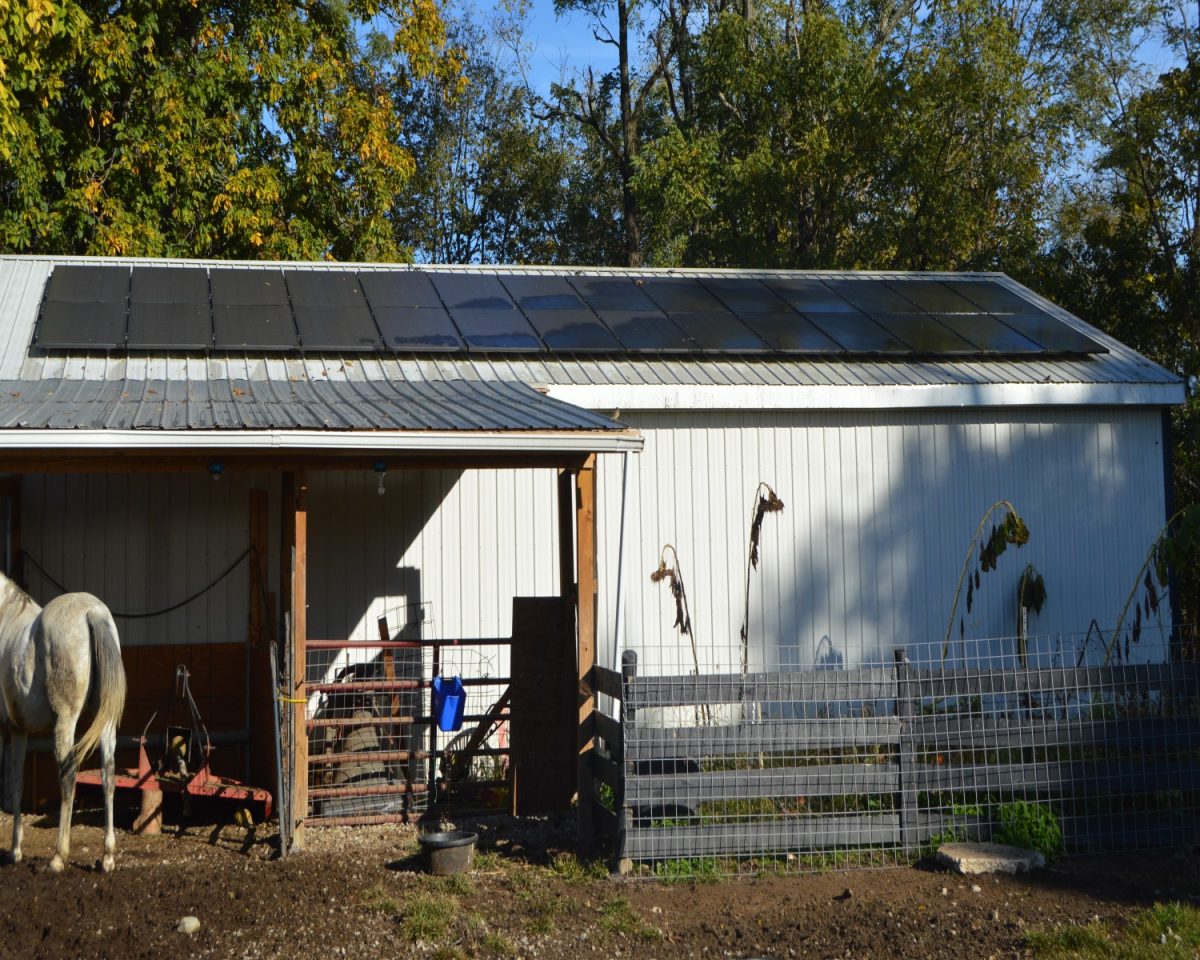Community continues to add solar to increase sustainability
Photo provided by Kathy German
Kathleen German uses solar panels on her barn roof to help power her Preble County farm.
January 14, 2022
The day before the Biden administration released its plan to produce 45% of US electricity from solar energy, the Oxford City Council approved its lease to turn the city’s old landfill into a solar farm.
Although the timing was unrelated, both policies show the determination to increase environmental sustainability and expand renewable and solar energy options.
Climate change has caused irreparable damage to the planet and will continue to for years and decades to come. It intensifies natural disasters, increases the spread of infectious diseases, and is detrimental to crop production and human life.
In 2012, the Utility Master Plan was approved, which provides a path toward carbon neutrality by converting campus energy systems into electric-based systems by 2026. Additionally, the City of Oxford announced that environmental sustainability is one of its top three priorities for 2022.
Chantel Raghu, the council representative for Oxford’s environmental commission, described ways the city is achieving its goal of being carbon-neutral, sustainable and self-sufficient.
“We have created a project ‘Solarized Oxford’ to incentivize Oxford residents to install solar panels on their houses,” Raghu said. “Just this past summer, eight new homes and churches in Oxford added solar panels. As an incentive, residents will pay 20% less by buying panels in bulk.”
However, neither President Crawford of Miami University nor the city can force people to want to make a change. Kathleen German, a professor of media and communication at Miami, took action by installing 24 solar panels on her farm’s roof two years ago.
Born into the Oglala Lakota Sioux tribe, German has always been passionate about promoting environmental sustainability and mitigating climate change. Although the initial installation of solar panels is expensive — there is an estimated $14,400 installation cost for 6-kW systems in Ohio — the installation benefits the economy and environment long-term.
“The Oglala tribe, and other Indian tribes, focus on the future of their families and communities, whereas white culture focuses on the present,” German said. “Everyone is concerned with the short-term costs, rather than focusing on the long-term benefits.”
German expressed that society’s concern of costs, price reductions or incentives are needed for people to provide personal solar energy.
Miami has the potential to greatly contribute to environmental sustainability because it is surrounded by large stretches of open land.
“Adding solar panels or other solar energy options to future infrastructure, even just a hundred panels at a time, would make a difference and spark future ideas,” German said.
Adam Sizemore, Miami’s sustainability director, addressed this and other ideas that Miami has enacted – or will enact – to enhance energy efficiency on campus.
“We want as much of the campus powered by electrification as possible because you can produce electricity in many different ways, whereas if you are reliant on a fuel source, like natural gas or coal, you will never go carbon neutral,” Sizemore said.
“Over the 10 years of Utility Master Plan, as our campus has grown about 30%, we’ve reduced carbon by 52% [on a per gross square foot level],” Sizemore said. “Since 2010, we have made 13 buildings heated by geothermal energy and plan to have 43 buildings heated by geothermal energy by 2026.”
Duke Energy Sustainable Solutions’ website has a carbon footprint calculator to show organizations’ carbon emissions and carbon footprint.
Miami’s address received a renewable energy score of 5% — the percentage of grid-sourced energy generated from renewable energy sources: solar, wind and hydroelectric — and a carbon-free score of 41% — the percentage of grid-sourced energy generated from carbon-free sources: solar, wind, hydroelectric and nuclear.















